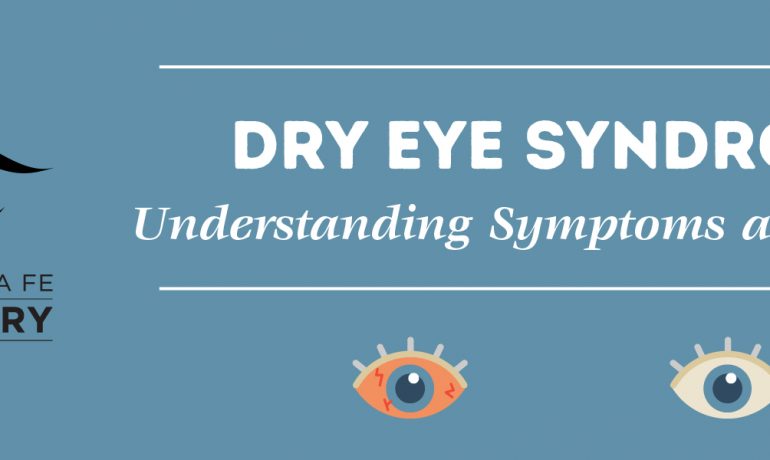Dry eye syndrome is caused by a chronic lack of sufficient lubrication and moisture on the surface of the eye. Consequences of dry eyes range from subtle but constant eye irritation to significant inflammation and even scarring of the front surface of the eye.
In addition to being called dry eye syndrome, dry eye disease, or simply “dry eye,” alternative medical terms used to describe dry eyes include:
- Keratitis sicca. Generally used to describe dryness and inflammation of the cornea.
- Keratoconjunctivitis sicca. Used to describe dry eye that affects both the cornea and the conjunctiva.
- Dysfunctional tear syndrome. Used to emphasize that inadequate quality of tears can be just as important as inadequate quantity.
Prevalence
Dry eyes are very common, and dry eye syndrome is a major reason for visits to the eye doctor. A recent online poll revealed that nearly half (48 percent) of Americans age 18 and older regularly experience dry eye symptoms.
Also, results from a 2012 Gallup poll show that more than 26 million Americans suffer from dry eyes, and this number is expected to increase to more than 29 million within 10 years.
Symptoms
Symptoms of dry eyes and dry eye syndrome include:
- Burning sensation
- Itchy eyes
- Aching sensations
- Heavy eyes
- Fatigued eyes
- Sore eyes
- Dryness sensation
- Red eyes
- Photophobia (light sensitivity)
- Blurred vision
And as odd as it may sound, watery eyes also can be a symptom of dry eye syndrome. This is because dryness on the eye’s surface sometimes will over-stimulate production of the watery component of your tears as a protective mechanism. But this “reflex tearing” does not stay on the eye long enough to correct the underlying dry eye condition.
In addition to these symptoms, dry eyes can cause inflammation and (sometimes permanent) damage to the surface of the eye or inhibit contact lens wear.
Dry eye syndrome also can affect the outcomes of LASIK and cataract surgery.
What Causes Dry Eye?
An adequate and consistent layer of tears on the surface of the eye is essential to keep your eyes healthy, comfortable and seeing well. Tears bathe the eye’s surface to keep it moist and wash away dust, debris and microorganisms that could damage the cornea and lead to an eye infection.
A normal tear film consists of three important components:
- An oily (lipid) component
- A watery (aqueous) component
- A mucous-like (mucin) component
Each component of the tear film serves a critical purpose. For example, tear lipids help keep the tear film from evaporating too quickly and increase lubrication, while mucin helps anchor and spread the tears across the surface of the eye.
Each tear component is produced by different glands on or near the eye:
- The oily component is produced by meibomian glands in the eyelids.
- The watery component is produced by lacrimal glands located behind the outer aspect of the upper eyelids.
- The mucin component is produced by goblet cells in the conjunctiva that covers the white of the eye (sclera).
A problem with any of these sources of tear film components can result in tear instability and dry eyes, and there are different categories of dry eyes, depending on which component is affected.
For example, if the meibomian glands don’t produce or secrete enough oil (meibum), the tear film may evaporate too quickly — a condition called “evaporative dry eye.” The underlying condition — called meibomian gland dysfunction — is now recognized as a significant factor in many cases of dry eye syndrome.
In other cases, the primary cause of dry eye is a failure of the lacrimal glands to produce enough watery fluid (aqueous) to keep the eyes adequately moistened. This condition is called “aqueous deficiency dry eye.”
The specific type of dry eye often will determine the type of treatment your eye doctor recommends to give you relief from your dry eye symptoms.
What Can I Do About My Dry Eye?
At Rancho Santa Fe Optometry we have new technology that can now measure these different types of Dry Eye Symptoms so that the doctors can correctly diagnose the type of dry eye that you may have. We also have new treatment options for meibomian gland dysfunction called iLux. You can read more about iLux here. If you have any other questions about this or anything else we offer here at our please, please don’t hesitate to call (858) 756-3210 or make an appointment today.
This article was adapted from: https://www.allaboutvision.com/conditions/dryeye-syndrome.htm
At Rancho Santa Fe Optometry we offer comprehensive eye examinations for all ages. With a focus on children’s vision and vision therapy, our doctors test for visual acuity, visual efficiency skills and visual information processing starting in early infancy. The practice also provides diagnosis, treatment and management of diseases that affect the human eye and visual system, including dry eye syndrome, diabetic retinopathy, cataracts, macular degeneration and keratoconus.


